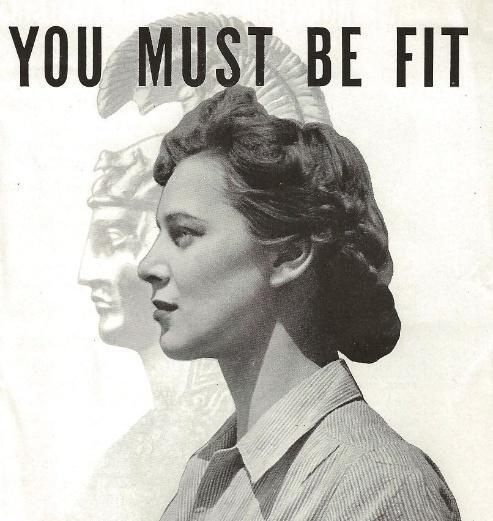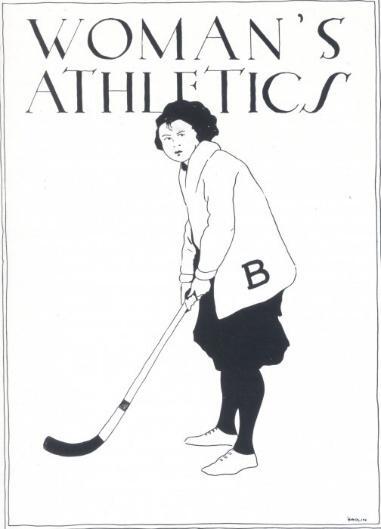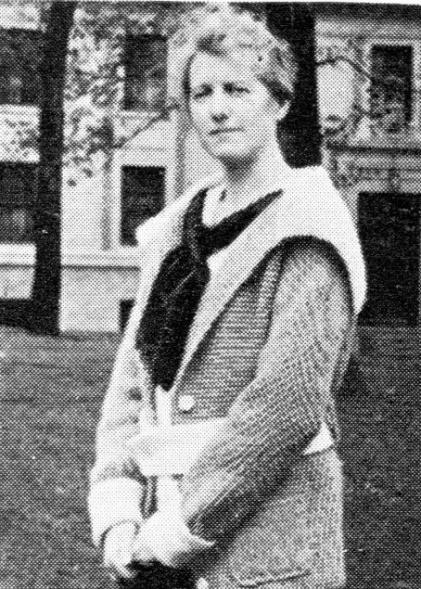Mabel Lee
Alex Zimmer, History 250: The Historian Craft, Spring 2025
Mabel Lee was a pioneering figure in the early development of physical education for women and was also a passionate advocate for women’s participation in athletics at a time when societal norms often discouraged it. Working in the early 20th century, Lee challenged prevailing attitudes that limited women's roles in physical education and athletics, arguing instead for inclusive and educational approaches to physical fitness. Rather than emphasizing competition, she wanted to and planned on focusing to create opportunities for all women to engage in physical activity, regardless of their athletic ability or social hierarchy. Through her leadership in national organizations and her work at Coe College and The University of Nebraska, Lee helped lay the groundwork for the broader acceptance of women in athletics and physical education, shaping the field of physical education for generations to come. She also contributed to and still holds a big impact on women in sports, and also how women are involved in sports still today. Mabel Lee pushed early on in her education career for colleges to abandon intercollegiate athletics for women in favor of intramural contests and their involvement in physical education and athletics, moderated by women physical educators like herself.
Mabel Lee was born in 1886 in a small town in Iowa, where she would grow up and eventually attend Coe College. After graduating with a degree in psychology, Lee became Coe’s second physical director in the history of the college in 1910. After Lee’s stint at Coe, she would then go on and become the Director of Physical Education for women at University of Nebraska-Lincoln from 1924-1952. Lee would also become the first woman President of the American Alliance for Health, Physical Education, and Recreation and the American Academy of Physical Education in 1931. She presided over the women’s Olympics in the Los Angeles Games of 1932. Lee was honored by the President’s Council on Physical Fitness and Sports in 1982 as one of five women in America who meant the most to women’s fitness.i
For much of the early 20th century, women faced significant restrictions in the realm of athletics, including being excluded from both intercollegiate sports and even many intramural activities. These limitations stemmed from widespread societal beliefs that physical exercise was harmful to women’s health, particularly their reproductive capabilities. Many educators and medical professionals of the time warned that physical activity would damage a woman’s “delicate” constitution or make her appear too masculine and would shy away from the appearance that a woman at this time should obtain. Maintaining femininity, modesty, and a “clean” appearance was prioritized over strength, endurance, or skill. Unlike men, who were celebrated for pushing their physical limits and enduring pain, women were discouraged from sweating, competing aggressively, or engaging in sports, whether it was a contact sport or not. Some schools even had dress codes requiring women to wear restrictive clothing that made any active moment or physical activity more difficult. These double standards were deeply embedded in the cultural norms of the certain day and age, and they reinforced a narrow definition of womanhood that excluded athleticism. Lee, at a very young age, was a sickly and underweight child with poor posture who survived battles with typhoid, diphtheria, measles, chicken pox, scarlatina, and whooping cough, which may also have been another reason why she pushed so hard to get women involved in sports and other physical activities.ii It was against this backdrop that pioneers like Mabel Lee pushed for change, challenging these outdated assumptions and opening new and different doors for women to claim their rightful place in sports and physical activities.
For much of the early 20th century, women faced significant restrictions in the realm of athletics, including being excluded from both intercollegiate sports and even many intramural activities. These limitations stemmed from widespread societal beliefs that physical exercise was harmful to women’s health, particularly their reproductive capabilities. Many educators and medical professionals of the time warned that physical activity would damage a woman’s “delicate” constitution or make her appear too masculine and would shy away from the appearance that a woman at this time should obtain. Maintaining femininity, modesty, and a “clean” appearance was prioritized over strength, endurance, or skill. Unlike men, who were celebrated for pushing their physical limits and enduring pain, women were discouraged from sweating, competing aggressively, or engaging in sports, whether it was a contact sport or not. Some schools even had dress codes requiring women to wear restrictive clothing that made any active moment or physical activity more difficult. These double standards were deeply embedded in the cultural norms of the certain day and age, and they reinforced a narrow definition of womanhood that excluded athleticism. Lee, at a very young age, was a sickly and underweight child with poor posture who survived battles with typhoid, diphtheria, measles, chicken pox, scarlatina, and whooping cough, which may also have been another reason why she pushed so hard to get women involved in sports and other physical activities.ii It was against this backdrop that pioneers like Mabel Lee pushed for change, challenging these outdated assumptions and opening new and different doors for women to claim their rightful place in sports and physical activities.
Lee did not so much "abandon" intercollegiate athletics for women as much as she prioritized more accessible, inclusive, and less competitive forms of athletic engagement for women at a time when expectations and barriers made organized sports inaccessible to women Lee worked to carve out space where women could still benefit from physical education. At the University of Nebraska and through her leadership in the American Physical Education Association, she promoted intramural and recreational programs that emphasized health, education, and community over competition Lee’s approach ensured that physical activity was not limited to elite athletes but available to all women, regardless of skill level or competitive interest. While her model may seem conservative by today’s standards, it laid a crucial foundation for the broader acceptance and institutional support of women’s athletics in later decades. Mabel Lee’s work with intramural activities and contests was crucial in providing women with accessible and organized opportunities to engage in physical activity at a time when intercollegiate competition was typically off-limits to them. She believed strongly that participation in sports built character, leadership, and community qualities just as vital for women as for men. Through her efforts, intramural programs at institutions like the University of Nebraska became vibrant spaces where women could develop athletic skills, experience teamwork, and build confidence in environments that were otherwise lacking in support for female athletes. Her advocacy laid the groundwork for broader acceptance of women's physical education and helped shift public attitudes by proving that women were not only capable of athletic participation but thrived in it. These programs also served as early models for other colleges, fostering a slow but powerful ripple effect across the country, which led to a nationwide movement of other countries joining in and going along with the idea of women participating in athletics and physical activity. By promoting intramural sports as legitimate and essential, Lee helped create a foundation that made the eventual rise of intercollegiate women’s athletics and the passing of Title IX law more culturally and institutionally viable.iii
Mabel Lee was a pioneering figure in the field of physical education, advocating fiercely for the inclusion of women in physical activities and athletic programs during a time when such opportunities were limited and most, if not all of the time, discouraged. She made significant contributions through her teaching, leadership, research, and activism. One of the biggest roles that Lee played was serving as president of the American Physical Education Association, one of the few women to do so at the time, and also the first women to fill the role.iv
Mabel Lee worked tirelessly to challenge prevailing beliefs about women’s physical limitations, insisting that physical education was just as vital for the development of women as it was for the development of men. Her advocacy played a critical role in laying the foundation for the growth of women’s sports and physical education programs, pushing back against the restrictive gender norms of the early twentieth century, which excluded women majority of the time. By creating opportunities in spaces where women had long been excluded, she empowered future generations not only to participate in athletics, but also to lead and innovate within them. Her legacy endures today in the growing visibility, institutional support, and leadership of women in collegiate and professional sports. Without Lee’s leadership roles and qualities, who knows what the world of women’s sports would look like today in the twenty first century; how much different would it look like now if Lee did not speak her mind and push early on for women participation in athletics and physical education?
Mabel Lee not only had a lasting impact on women, but also helped shape the role of athletics in higher education nationwide. While at Coe College, she said, “May the play spirit be kept alive in our college women… that every girl who enters Coe College will learn some recreational activities which she may carry through to adult life.”v This is very important, as it would lead to new paths to women in sports; leading women to be able to participate in physical education and also athletic groups and programs. Coe College was turned into a place that prioritized women in athletics and did not exclude women from participating in these certain activities anymore. At the University of Nebraska, she pioneered programs in women’s physical education at a time when female participation in athletics was still controversial. Her leadership and advocacy set new standards, encouraging other universities to follow suit in supporting women’s sports. She was instrumental in shaping curriculum and policies that emphasized the importance of fitness, leadership, and equality for women in academia and athletics. “I made up my mind I wouldn’t marry. I wanted a career, but I didn't know what career. I was groping for something I didn't know existed,” highlighting her trailblazing mindset.vi Her legacy was cemented in 1977 when the Women’s Physical Education Building at the University of Nebraska-Lincoln was renamed Mabel Lee Hall, a testament not only to her local contributions, but to her influence on universities across the country.vii
Mabel Lee pushed early on in her physical education career for colleges to abandon intercollegiate athletics for women and was in favor of intramural contests and women’s involvement in physical education, moderated by women physical educators like herself. This was a huge steppingstone for women in athletics and led to the normalization of women's participation in sports and other physical activities. Her advocacy not only challenged the belief that women were too burdened by social roles to engage in athletic activity, but also redefined physical education as a space for empowerment rather than exclusion, a new place that women should not be afraid to be involved in. Lee’s work was crucial for future generations, helping to shift public perception surrounding women's capabilities and rights. Her legacy reminds women in athletics that progress in gender equality often begins with changes in how society values, believes, and views the surrounding people and that even small acts can spark lasting cultural transformation that may have a large and powerful impact on the present as well as many other future generations.
1 The Birth of Women’s athletics at Coe College and beyond. Coe College. (n.d.). https://www.coe.edu/why-coe/news/coe-news/birth-womens-athletics-coe-college-and-beyond
2 Thomas, E. D. (n.d.). Theleanberets. Conversation with Mabel Lee. https://theleanberets.com/wp-content/uploads/2014/11/Conversation-With-Mabel-Lee.pdf
3 Bell, R. C. (2016, October 12). A history of women in sport prior to title IX. The Sport Journal. https://thesportjournal.org/article/a-history-of-women-in-sport-prior-to-title-ix/
4 The Official Athletics website of Coe College. Coe College. (n.d.-b). https://kohawkathletics.com/honors/hall-of-fame/mabel-lee/185
5 The Birth of Women’s athletics at Coe College and beyond. Coe College. (n.d.-a). https://www.coe.edu/why-coe/news/coe-news/birth-womens-athletics-coe-college-and-beyond
6 Mabel Lee. Coe College History - Athletics - Other - Memorable Coaches - Mabel Lee. (n.d.-a). https://public.coe.edu/historyweb/athletics_other_coaches_lee_mabel.htm
7 Nebraska authors. Mabel Lee | Nebraska Authors. (n.d.). https://nebraskaauthors.org/authors/mabel-lee
Bibliography
Jones, R. (n.d.). History: Physical educator Mabel Lee. The Lean Berets. https://theleanberets.com/history-physical-educator-mabel-lee/
This website is informational because it provides an overview of Mabel Lee’s contributions to physical education, women’s rights, and national fitness efforts. It includes historical facts and direct quotes, also achievements that highlight her influence on functional fitness, gender equality in athletics, and military training programs. The text educates readers about her leadership roles, such as being the first woman president of major physical education organizations and her advocacy for appropriate athletic attire for women. Through these detailed facts, the passage informs readers about her lasting legacy and impact on both fitness and women's history.
The Official Athletics website of Coe College. Coe College. (n.d.-b). https://kohawkathletics.com/honors/hall-of-fame/mabel-lee/185
Coe college talks about the chronological and factual overview of Lee’s achievements in women’s physical education. It highlights key milestones in her career, including her academic honors, leadership roles, and the institutions where she taught at. The passage also provides historical context, such as the attitudes toward women in athletics during her time, and how she helped shift those views. Through specific accomplishments, like founding and starting of traditions, earning degrees, and having a university building named in her honor, the passage talks about her lasting legacy and the evolution of women's roles in physical education.
Burwell, F. (2013, February 23). Fridays with Fred: Shaking things up with P.E. director Mabel Lee • library & information technology services • Beloit college. https://www.beloit.edu/live/news/1665-fridays-with-fred-shaking-things-up-with-pe
Beloit offers a detailed, fact-based account of Mabel Lee’s professional journey and her transformative role in advancing women’s physical education at Beloit College and beyond. It provides historical context, direct quotes, and specific examples of the challenges she faced and overcame, such as advocating for women’s access to athletic facilities and fighting gender norms in physical education. The text also highlights her educational background, leadership roles, and lasting impact on women’s rights and civil rights. Through these documented events and accomplishments, readers gain insight into both Lee’s legacy and the broader evolution of women’s athletics in the early 20th century and the effect she left on women's athletics today.
Mabel Lee. Coe College History - Athletics - Other - Memorable Coaches - Mabel Lee. (n.d.). https://public.coe.edu/historyweb/athletics_other_coaches_lee_mabel.htm
This page is good because it talks about Mabel Lee's impact that she had on Coe College. Although she is mostly known for her work at UNL, she also did a lot even before that. It also includes a lot of her background and why she ended up where she did. It provides factual details about Lee’s life, education, and contributions to women’s athletics at Coe College. It includes specific dates, events, and quotes from interviews and newspapers that document her journey from a high school athlete to a pioneer in physical education. The text informs readers about her motivations, accomplishments, and the traditions she established, such as the Colonial Ball and May Fete. By sharing her personal story and historical impact, the passage educates readers about an important figure in the history of women's athletics and physical education.



